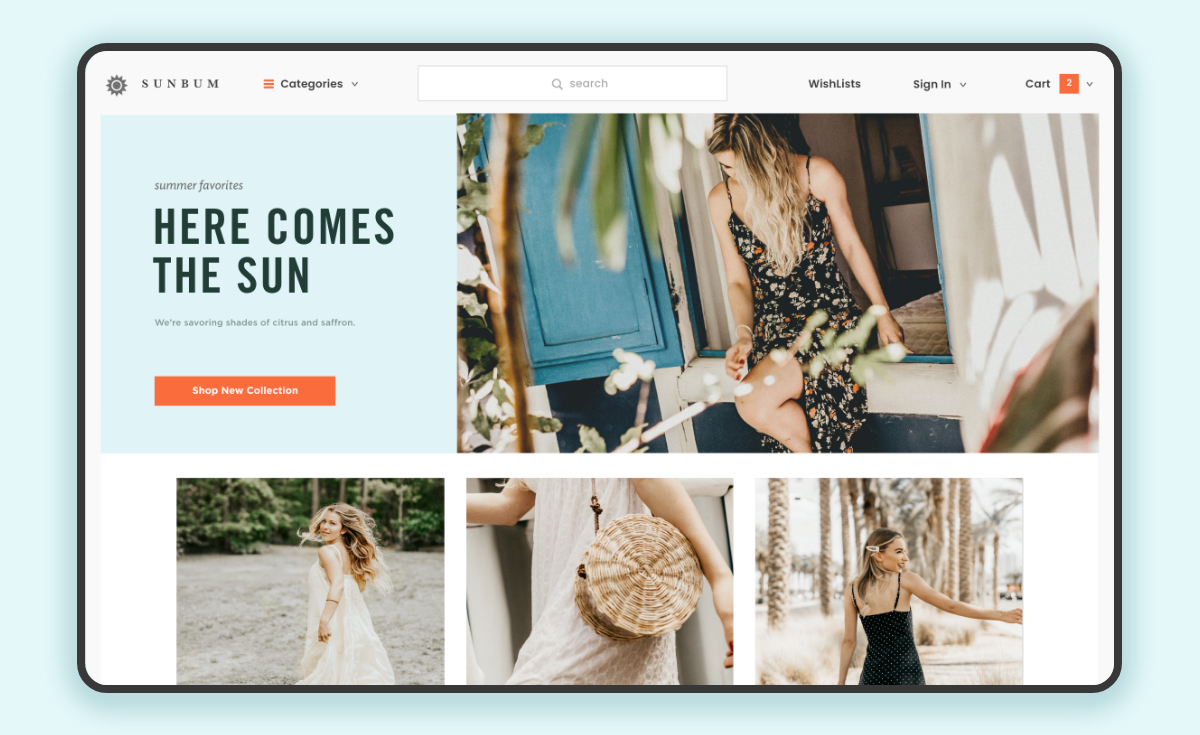By Miva | April 30, 2020

See why top ecommerce brands use Miva’s no-code platform to run
multiple stores, manage massive catalogs, and grow their revenue.
Brick-and-mortar retailers across the nation are facing significant challenges and existential threats. Efforts to slow the spread of coronavirus have stymied face-to-face transactions and made online shopping the go-to for those practicing social distancing. Brick-and-mortar retailers are now faced with the choice to shift to a digital-forward business model or risk falling behind. For retailers who already have a strong online presence, this shift may be relatively painless. For those who aren’t already doing a lot of business online, pivoting to an online-only model can be hugely disruptive.
The good news? It’s entirely possible to get your business online and serving customers in a matter of weeks. In this article, we offer a brief overview of what you need to consider when shifting to a digital-forward/online-only business model—whether you’re already selling online or launching a website for the first time.
We have included an 8-step quickstart guide to launching a retail website at the end of this article.
Think through every aspect of your customers’ purchase journey, from awareness to purchase, and consider how you will need to bring it online. When transitioning to a primarily online model, make sure your online store can accommodate your business’ unique needs in the following areas.
Awareness: How will customers find your website? In the absence of a physical location, you need to give your target market a way to discover your products. Connect with your existing customers and let them know that they can now support your store from home (and encourage them to help get the word out). Before your site goes live, you’ll want to establish channels for both acquiring visitors and retaining them as loyal repeat customers. Quality, user-focused content and ecommerce search engine optimization (SEO) is essential for making your business and products findable on search engines.
There are a variety of ways to drive interest in your business’ online presence, including:
Consideration: Consider how your in-store shoppers assess your products. Perhaps they sample certain items, try things on, read descriptions, and consult with sales associates. For many customers, one of the most compelling aspects of brick-and-mortar shopping is the ability to thoroughly examine and become familiar with products prior to making a purchase. To engage these customers online, you can recreate this experience on your website with digital showrooms, onsite search, product recommendations, detailed product views, educational product content, and live onsite chat.
Purchase: To minimize the risk of cart abandonment, you want to make your onsite purchase experience as customer-friendly as possible. Think about who your target customer is and what they need out of a purchase experience. Do they need the ability to purchase products in kits or bundles? Should they be shown similar items when checking out? Are they at risk of leaving your site if your checkout takes too long, requires too much information, or doesn’t accept their preferred payment method?
Post-Purchase: Brick-and-mortar has an advantage on online selling when it comes to delivering instant gratification. In ecommerce, there is a delay between the time when your customer makes a purchase and the time when they receive it. This can be a source of friction and uncertainty for your customer, which is why proper management of the post-purchase experience is essential to success as an online retailer.
Put yourself in your customers’ shoes. How will they know their purchase is on the way? How will they receive communications from you and your team? What if they have a question about a product they purchased or want to know the status of their order? Make sure you’re prepared to communicate and receive important post-purchase information and customer inquiries.
Many brick-and-mortar retailers affected by coronavirus shutdowns have found creative and effective ways to serve their customers and build momentum while their physical locations are closed or otherwise restricted from operating as they normally would. Consider if any of the following would work with your own business and appeal to your customer base:
In an ideal situation, you would have plenty of time to transition your brick-and-mortar store to an online ecommerce business. Our current situation, however, calls for quick and calculated action to prevent obsolescence. Ready to get started? Download From Bricks to Clicks: 8-Step Quickstart Guide to Launching a Retail Website

Share this article:
No worries, download the PDF version now and enjoy your reading later...
Download PDF Miva
Miva
Miva offers a flexible and adaptable ecommerce platform that evolves with businesses and allows them to drive sales, maximize average order value, cut overhead costs, and increase revenue. Miva has been helping businesses realize their ecommerce potential for over 20 years and empowering retail, wholesale, and direct-to-consumer sellers across all industries to transform their business through ecommerce.
Visit Website